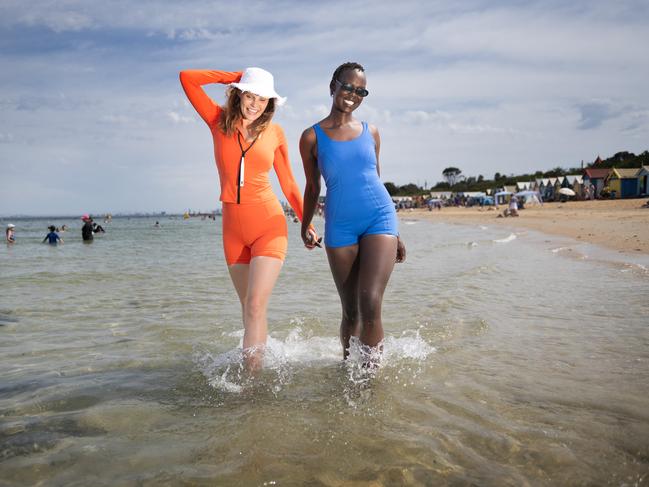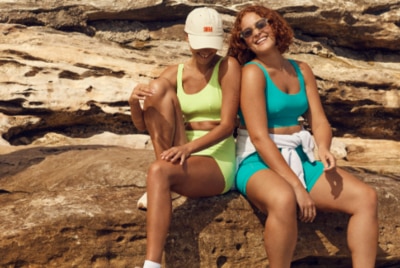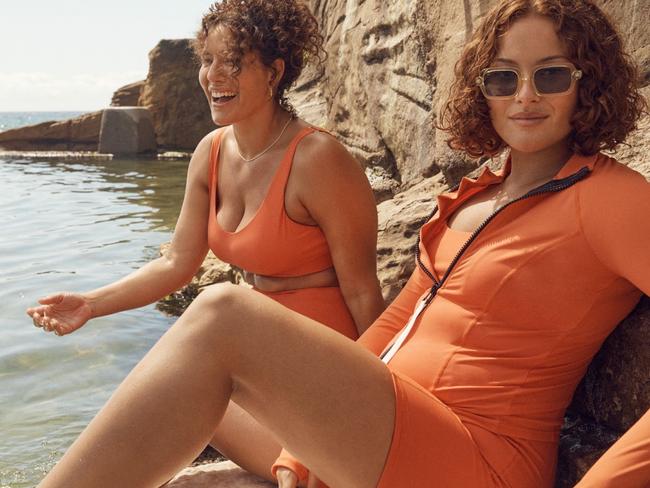Melbourne woman creates sun-protective swimwear to fight melanoma spike and Gen Z tanning trends
A Melbourne woman has taken a stylish stand against the rising tide of melanoma and dangerous tanning trends rife among Gen Z.
Victoria
Don't miss out on the headlines from Victoria. Followed categories will be added to My News.
Sun-safe fabric and high-coverage swimwear are rising in popularity among Victorians seeking to combat dangerous tanning trends and spiking melanoma diagnoses.
From Gen Z to Boomers, long sleeves, high necklines and longer shorts are all increasingly popular choices for people seeking to protect their skin at the beach.
Melbourne woman Clare Barrins is a melanoma survivor and said these days, she would always rather cover up more than expose her skin to the harsh Aussie sun.

Seeing tanline trends surge among young people worried her, Ms Barrins said, because it was attached to an attitude of “it will never happen to me”.
“It makes me frustrated that people don’t seem to think melanoma — or other skin cancers — can happen to them, when the reality is that it can happen to any of us,” she said.
“Melanoma doesn’t discriminate. Having said this, I think there is a general level of understanding from Australians of all ages that the sun has many long-term damaging effects on our skin — and even deeper than just our skin — and that there’s no such thing as a safe natural tan.”
Data from the Melanoma Institute showed an Australian is diagnosed with melanoma every 30 minutes, with one Aussie succumbing to the disease every six hours.
It comes as the Herald Sun revealed melanoma in Victoria is officially on the rise.

In a bid to change the direction of Australian swimwear and fashion, Ms Barrins created her own swimwear brand, Sheila the Label, to prove “you can look stylish at the beach and still be sun smart”.
“I think there will always be a tension between trends that inspire tanning, and sun safety — but hopefully the right education and products on the market can influence people to make their tanning choices responsibly,” Ms Barrins said.

“You don’t have to engage in all trends, particularly if they’re not safe. Be yourself, showcase your unique style and protect yourself to support your long-term skin health.”
Tamara Dawson of the Melanoma and Skin Cancer Advocacy Network said a worrying element of the tanning trends dominating social media right now is how “our skin remembers damage and trauma”.
“In 10 or 20 years from now, I suspect there will be many people who wish they didn’t take part in this trend,” she said.
“We know the link between sunburn, tanning and skin cancer, so why are we doing this to ourselves? We need to change the culture around tanning. It’s deadly but we completely dismiss the risks.”



